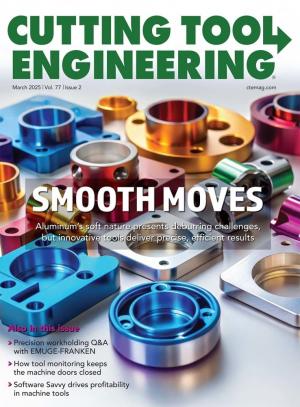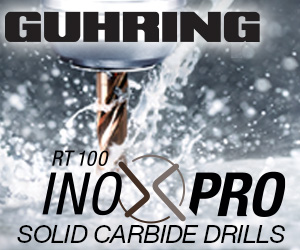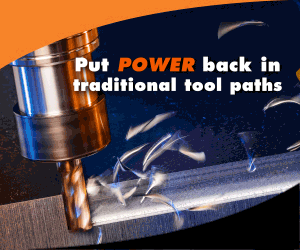For situations where parts are small and space is tight inside sliding head machines, a new holding system offers fast and easy tool changes and a wide variety of cutting options.
Introduced by Sandvik Coromant, the QS Micro is designed for use in many industry segments, including automotive, aerospace, medical and general engineering. It was developed specifically for machining small workpieces (up to 40 mm in diameter, but normally around 20 mm) in smaller Swiss lathes, noted Hampus Jemt, Sandvik Coromant’s global product manager for small part machining and threading. Inside these machines, space is “very limited, so it’s difficult for operators to reach the tools,” Jemt said. “Therefore, in many cases, they are not able to change the tool insert without taking the tool out of the machine. So the main idea with this system is that you easily can remove the cutting head, change the insert outside (the machine) and put it back in.”
According to Sandvik Coromant, the QS Micro features an extensive range of cutting heads for general turning, parting and grooving, and threading. These heads attach to rectangular shaft adapters in cross-sectional sizes ranging from 10 mm × 10 mm to 20 mm × 20 mm, as well as equivalent inch sizes. Shank adapters can fit both rightand left-hand tools. A side lock holding mechanism that firmly attaches heads to adapters minimizes vibration during cutting operations.
QS Micro component grades and geometries are available for all application areas, according to the company. Materials that can be cut include steel, stainless steel, hardened steel, cast iron, non-ferrous materials and heat-resistant super alloys.
The components of the QS Micro system allow a large number of possible configurations, with different cutting heads fitting into different adapters as well as into the same adapter. This modularity “is a good thing if you want to limit your tool inventory,” Jemt noted.
Jemt also points out that cutting head changes can be made quickly, which reduces machine downtime. And when a cutting head is removed for indexing, he said, the position of the cutting edge will be within ±3 μm of the previous edge position when the head is put back in place. This helps to ensure excellent accuracy and repeatability from one operation to the next.
For better chip control and longer tool life, all QS Micro shank adapters feature a through-coolant design that allows easy connection to the cutting heads, whose ports deliver coolant to the cutting area. A coolant line can be connected to the rear or side of the shank adapter.
Though there are several similar products available in the market, Jemt points to the QS Micro’s index precision as a distinguishing feature. “We can ensure that the cutting edge won’t be flying around to different locations,” he said.
 The QS Micro holding system includes a variety of different components that allow quick cutting head changes in tight spaces. Sandvik Coromant.
The QS Micro holding system includes a variety of different components that allow quick cutting head changes in tight spaces. Sandvik Coromant.
Contact Details
Related Glossary Terms
- alloys
alloys
Substances having metallic properties and being composed of two or more chemical elements of which at least one is a metal.
- coolant
coolant
Fluid that reduces temperature buildup at the tool/workpiece interface during machining. Normally takes the form of a liquid such as soluble or chemical mixtures (semisynthetic, synthetic) but can be pressurized air or other gas. Because of water’s ability to absorb great quantities of heat, it is widely used as a coolant and vehicle for various cutting compounds, with the water-to-compound ratio varying with the machining task. See cutting fluid; semisynthetic cutting fluid; soluble-oil cutting fluid; synthetic cutting fluid.
- grooving
grooving
Machining grooves and shallow channels. Example: grooving ball-bearing raceways. Typically performed by tools that are capable of light cuts at high feed rates. Imparts high-quality finish.
- parting
parting
When used in lathe or screw-machine operations, this process separates a completed part from chuck-held or collet-fed stock by means of a very narrow, flat-end cutting, or parting, tool.
- shank
shank
Main body of a tool; the portion of a drill or similar end-held tool that fits into a collet, chuck or similar mounting device.
- threading
threading
Process of both external (e.g., thread milling) and internal (e.g., tapping, thread milling) cutting, turning and rolling of threads into particular material. Standardized specifications are available to determine the desired results of the threading process. Numerous thread-series designations are written for specific applications. Threading often is performed on a lathe. Specifications such as thread height are critical in determining the strength of the threads. The material used is taken into consideration in determining the expected results of any particular application for that threaded piece. In external threading, a calculated depth is required as well as a particular angle to the cut. To perform internal threading, the exact diameter to bore the hole is critical before threading. The threads are distinguished from one another by the amount of tolerance and/or allowance that is specified. See turning.
- turning
turning
Workpiece is held in a chuck, mounted on a face plate or secured between centers and rotated while a cutting tool, normally a single-point tool, is fed into it along its periphery or across its end or face. Takes the form of straight turning (cutting along the periphery of the workpiece); taper turning (creating a taper); step turning (turning different-size diameters on the same work); chamfering (beveling an edge or shoulder); facing (cutting on an end); turning threads (usually external but can be internal); roughing (high-volume metal removal); and finishing (final light cuts). Performed on lathes, turning centers, chucking machines, automatic screw machines and similar machines.









